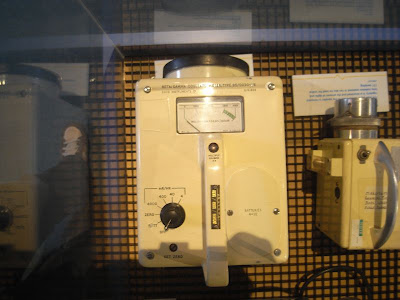 Q: Why do you want to go to the Chernobyl Zone?
Q: Why do you want to go to the Chernobyl Zone?
Q: Insn't the area around Chernobyl still contaminated by radiation?
Q: Is it safe to go to the "Zone"?
A: The short answer is no. Everything carries a certain amount of risk - and frankly, going to an irradiated and abandoned area is probably more dangerous, than watching the latest episode of House M.D. on your couch. But the risk is highly theoretical and it is probably not even statistically significant. Everyone has a definition of "safe", after all it is just a word with an arbitrary meaning attached to it. Is the chair you are sitting on right now safe? By whose standards?
Q: Aren't you going to get sick by going to the Zone? Isn't that dangerous?
A: Radiation is not like a virus infection, you will not get "poisoned" as the peculiar English phrase might suggest. Radiation is everywhere around us, you are even affected by it right now - when reading these very lines. This background radiation is very low, and normal. When assessing the danger or the seriousness of a radiation dosage - you have to consider the level of radiation and the time spent near the source. It is no means safe to live in Chernobyl, or eat mushrooms grown anywhere there. But the level of radiation is perfectly safe enough to enter the restricted zone for a day. (Or even more...)
Q: Even though you think the trip is safe, aren't you just a little afraid?
A: Generally speaking no, though there are two remotely possible worrisome situations I can conceive: The first is having the car broken while deep inside the zone or having a car accident there. The more troubling idea is to breathe in a "hot" particle, a tiny bit of dust from the radioactive fuel blown out to the surroundings.
Q: What's the yellow instrument? What is the type of the dose meter you are using? Where can I get one of those?
A: It is a beta/gamma dose and dose rate meter. Measures the radiation in units which can be related back to the radiation's effect on the human body: Sieverts and its fractions. It is manufactured by a Ukranian company, called Ecotest and its type is "Terra-P". You can get one on eBay.
Q: What is the measurement unit of radiation?
A: There are many measurement units related to radiation, all a little different in their definition. Although it might seem a little overwhelming at first, you may learn about them here. Most people are interested in its effect on humans, the radiation dose or the dose rate. The exposure to radiation is measured in Sieverts (Sv), and because this is a large unit its fractions milli and micro Sieverts (mSv, μSv). The dose can be simply defined as the accumulated exposure in any given time, the dose rate as the dose received in a given time frame, usually an hour (mSv/h, μSv/h)...
Q: What is the safe radiation level?
A: For long time exposure, the maximal safe level is usually considered to be 0.30 μSv/h - depending on the local laws and regulations. Mind you, this means that you can be exposed up to this level for all your life, and still be fine. The typical background radiation will be somewhat lower, around 0.10 - 0.30 μSv/h. You can easily calculate the annual dose from that.
There is a decent guide about the acute effects of radiation exposure shown here. The low level exposure effects are somewhat disputed, science has not entirely answered this question yet. (The simple linear model is actually extrapolated from the data gathered after the Hiroshima and Nagasaki bombings, this is a somewhat limited source - as of course there is no other/better way to test radiation on humans.)
Q: What is the equivalent in radiation dose to a day trip to Chernobyl? What dose will you get there?
A: It's about the same as getting a full chest X-Ray, or even comparable to the excess radiation acquired on a long intercontinental flight. Yes, you get about 25 times the normal background radiation at a cruising altitude of 8000m.
Anything below 0.05 Sv can be considered as entirely harmless. No symptoms are shown even up to 0.2 Sv, after wich red blood cells go through a temporary change. The expected dose I will get from the trip is around 0.010 - 0.015 mSv. To put this another perspective, that is ~0.00001 Sv.
Q: You are interested in the Chernobyl accident. Does that mean, that you are opposed to nuclear power?
Q: Are you a nuclear scientist? Do you know much about nuclear physics?
A: No, I'm a control engineer. My understanding in nuclear physics is pretty basic.
Q: Do you play S.T.A.L.K.E.R.?
No, I'm not much into video games. Although I would like to try this one.






















